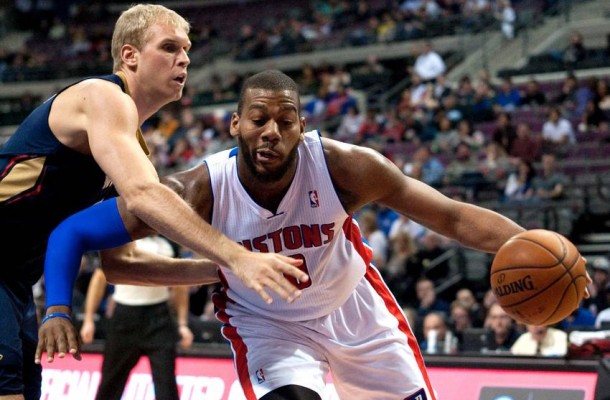Larry Bird, easily considered the best shooter of his generation, hit 649 three-pointers in his career. Steph Curry hit 688 in his last two regular seasons. Larry Bird shot 37.6% from behind the arc over the course of his career. That would have placed him 54th last season, right below Portland Trailblazers 7-foot center Meyers Leonard. I point this out to give specifics to what we already know; The game changes, it evolves.
Rule changes lead to different opportunities and styles from other leagues work their way into the NBA game. But really, at the end of the day, each team is just trying to be as efficient as possible, and the key to getting a leg up on your competitors is to find inefficiencies and exploit them. Not every team can sign a LeBron or a Durant in free agency, nor could they be blessed with the top pick in a season where Anthony Davis or Karl Anthony Towns comes out. So, you have to work the edges and find use for what others find no use for. You need to find treasure from other teams trash, and/or turn your own trash into treasure.
A few years ago, there was a glut of athletic, defensive minded wings, but because they had no offensive game to speak of, they rode the pine. The small forward position has traditionally been a position that created offense, for itself and sometimes others. But guys like Demarre Carroll and Jae Crowder did not have those skill sets. What they did have was the ability to defend multiple positions, so teams were able to put them on the floor at the ‘4’ to finish games. This limited their lack of elite wing scoring and shooting, basically counting anything they could provide from the outside as gravy.
The smart NBA teams stopped looking at what a guy couldn’t do, and instead utilized what they could do and found a way to minimize the weakness. The teams that were ahead of the trend got in cheap. Carroll went to Atlanta on a two-year, six million dollar deal. Joe Crowder was a throw-in for the Celtics when Dallas traded for Rondo. And so on and so on.
Now, it is time to find the next inefficiency, and I am here to tell you what it will be. It is the offensively skilled but defensively challenged big man. Because of their ability to score, teams have rewarded them with big contracts, only to find out that it is hard to play them at the end of games and/or in the starting lineup because they are a train wreck on defense. So, they look at their payroll and see a bloated cap number for a guy they are having a hard time giving key minutes to and panic. They lack the creativity to use him properly, and that is where a forward thinking GM could pounce, just like Danny Ferry did in Atlanta and Danny Ainge did in Boston.
You see: Two points in the second quarter count every bit as much as two points in the fourth quarter, or the beginning of the first quarter. It seems common sense to agree, but by the way teams construct their teams, not everyone seems to nod their head along with this statement. A massive amount of time and resources are spent on finding guys to start and/or finish games. The other lineups are just supposed to “not blow it.” But what if you spent money on building those units so that they changed the game, rather than just maintained it?
An offensively skilled big man can rack up points in bunches on your second unit, while giving your starters a break. A guy of the caliber I am talking about (Enes Kanter, Zach Randolph, etc) will score against anyone, but the benefit of bringing him off the bench is that it minimizes his weaknesses – much like playing average to poor small forwards at the 4 has minimized theirs.
If Enes Kanter is on the floor to start a game, he is defending DeMarcus Cousins or Marc Gasol. If he is in the game when those guys are on the bench, he is defending Willie Cauley-Stein or Brandan Wright. He is defending the rim against Troy Daniels instead of Mike Conley. His weaknesses are minimized, while what he does best is perhaps even more valuable because that skill set is more needed on the second unit.
The Thunder kind of fell into this when Steven Adams emerged to be a viable NBA starting center. The Grizzlies are doing it now with Randolph, in part because new coach David Fizdale wants more spacing. Meanwhile, you can start to see other teams dying to unload these kinds of guys, perhaps for pennies on the dollar. Milwaukee has wanted to dump Greg Monroe for months now. The Magic went out and traded for Serge Ibaka and gave huge money to Bismack Biyombo to finish (and perhaps even start) games. The Sixers are willing to part with 20 year-old Jahlil Okafor despite him putting up 18/7 in 30 minutes per game his rookie season.
These guys are out there to be had, because NBA teams haven’t seen their hidden value yet. They are second unit stars who can change a game more in 20 minutes than an above average defensive center with limited offensive skills can in 30-35. Eventually, the rest of the league will see this and snap these guys up and utilize them correctly. Here’s hoping the Pelicans get one before its too late.

2 responses to “Preparing For the Next NBA Trend”
The nightmare of Greg Stiemsma returns
An offensively skilled big man = Alexis Ajinca. Why shop anywhere else?